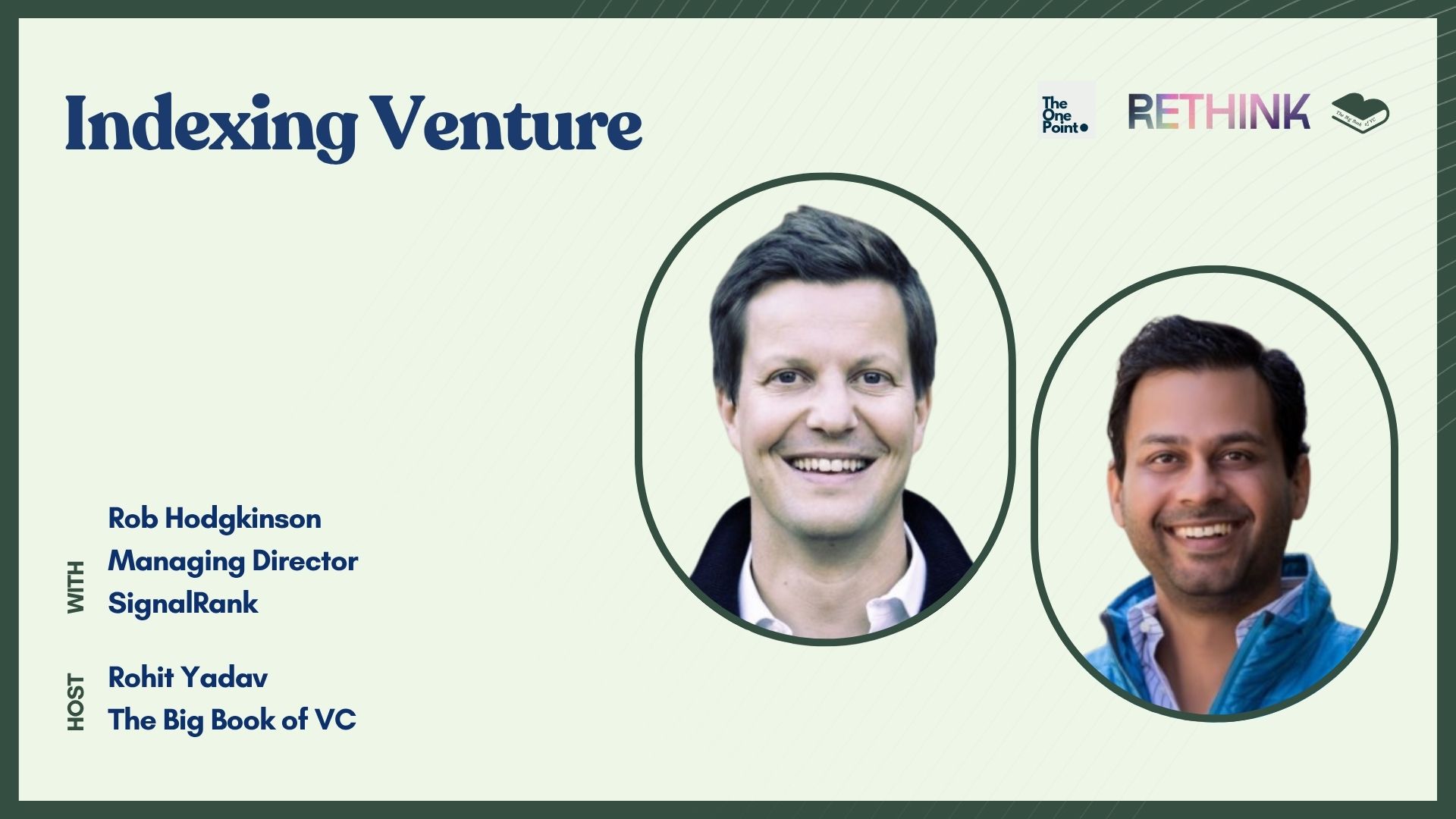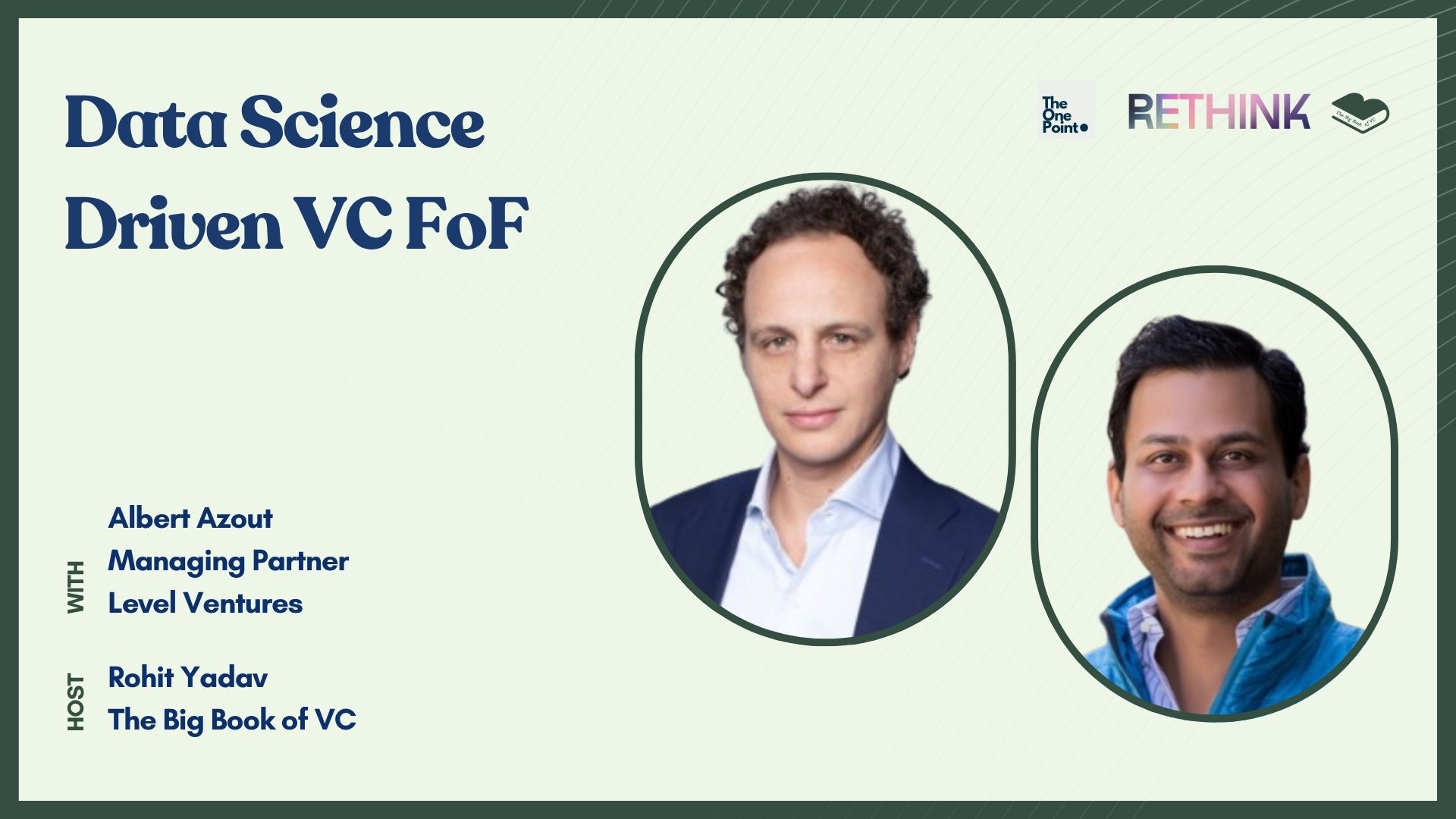Shifting Dynamics of Venture Fund Management
Snapshot of interview with Daniel Keiper-Knorr from Speedinvest
Rohit Yadav: Daniel, thank you for joining us. Let’s start simple: what is SpeedInvest?
Daniel Keiper-Knorr: SpeedInvest is a pan-European seed stage venture firm. We were founded back in 2011 in Vienna, Austria—still our headquarters. From a tiny €10 million boutique fund, we’ve grown to over €1.2 billion AUM today, with our latest fund being €350 million. We have offices in London, Berlin, Munich, Paris, and Vienna. With this setup, we aim to build truly pan-European seed-stage portfolios.
Rohit: Tell us more about the origin story. You sold a fintech company—how did that lead to founding SpeedInvest?
Daniel: My co-founders and I had already built a company together in the late '90s—an early fintech facilitating mobile payments via premium SMS. We rode the dot-com wave, raised capital in March 2000, which, as many will remember, was the month of the dot-com crash. After several pivots and M&A activity, we sold the company to VeriSign in 2006. After a couple of years within VeriSign, we regrouped and said: “Let’s try to make venture a bit better.” That’s how SpeedInvest began.
Rohit: You’ve lived through cycles—dot-com, GFC, COVID, now inflation. What’s the key learning?
Daniel: Markets go in cycles—some steep, some slow, some externally triggered. You can’t predict or time them. The key is to always keep your terminal goal in mind and build with the bigger picture. This is essential when working with LPs, who have a very different perspective than founders.
Rohit: Can VCs time the market?
Daniel: No. Timing implies short-term action, which is incompatible with a ten-year lock-up asset class. The moment a signal is visible, it’s too late. You need to already be in position before the signal hits.
Rohit: How about timing the trends—like AI or climate tech?
Daniel: That makes more sense. As a VC, you need to be ahead of the curve. When societal, technological, or political values shift, valuations can change tenfold. We’re here to benefit from the big shifts—not micromanage incremental moves.
Rohit: Should LPs try to time venture?
Daniel: Same answer—don’t. Either invest in venture or don’t. LPs who invest half-heartedly, trying to time vintages, often end up with disappointing results. Instead, they should pick a manager and commit to supporting them across 3-5 vintages. Venture is not a one-off.
Rohit: What are some portfolio highlights from your side?
Daniel: We’ve built sector-specific teams from day one. Our first fund focused on fintech, SaaS, and marketplaces. We added deep tech, climate, and health across successive fund generations. When deal flow in a sector becomes significant, we build a team around it—market analysis, dedicated capital, and a clear thesis. That’s how we added health tech and tech bio most recently.
Rohit: There’s often a debate around fund size—what’s your take?
Daniel: It’s not about big vs. small—it’s about structure. We built independent sub-organizations with capital allocation and investment autonomy. If governance and diligence processes are clear, a larger fund can work. The VC industry is maturing, like real estate or hedge funds. Boutique and mega-funds both have roles to play, and they need each other.
Rohit: Let’s talk Europe. How has the European VC ecosystem evolved?
Daniel: It’s grown tremendously. Compared to the early 2000s, we now see specialization, geographic depth, and a wave of emerging topics like AI. Honestly, AI feels like the biggest thing since the invention of the printing press. The ecosystem is growing up—it’s starting to sustain itself.
Rohit: If you had to compare it to the U.S., how far behind is Europe?
Daniel: I’d say more than a decade. The U.S. VC market dates to the ’60s. In Europe, most of us started in the ’90s. Some U.S. firms are in their third or fourth generation of GPs; in Europe, most are founder-led first-gen teams. But we’re entering a critical phase—transitioning to second-generation leadership will define the next 10-15 years.
Rohit: From an LP perspective, is there a gap in capital allocation to European venture?
Daniel: Yes, but a gap is also an opportunity. The “Series A crunch” is largely resolved. Now the gap is in Series B, C, and D—especially with too few large European growth funds. This leaves the door open for American and Asian funds. Building large-scale growth managers in Europe takes time, people, and experience. The opportunity is huge—question is, how long will European institutions pass it up?
Rohit: What role should public policy play in changing this?
Daniel: Initiatives like the Mansion House Compact in the UK, TIBI in France, and WIN in Germany are all positive. But we must set expectations right—venture will only get a small slice of that capital. Most will go into buyout, infrastructure, and private credit. That said, even a small slice can move the needle in VC.
Rohit: What’s changing in the LP-GP relationship in this “Venture 3.0” era?
Daniel: A lot. Fundraising used to be the “unwanted” part of the job. But the LP is the bottleneck—no LP, no venture. More firms are hiring full-time IR professionals, building continuous relationships rather than episodic fundraising campaigns. VC firms need to manage both sides of the marketplace—capital in and capital out.
Rohit: And what about the democratization of access? Retail is coming in via SPVs and platforms in the U.S. Is this happening in Europe?
Daniel: It’s beginning. Making the asset class accessible to more people is good. But it needs guardrails—maybe fund-of-funds only, limits on check sizes, or better education for new LPs. Private markets are fundamentally different from public ones. GPs have to manage communication and expectations very carefully.
Rohit: How should smaller GPs think about this?
Daniel: It’s tough. Venture is hard work. The idea of a true solo GP? Very romantic, but very unrealistic. Even for smaller firms, liquidity, investor relations, and portfolio management are team efforts.
Rohit: Succession planning is becoming a big topic. How do you address it at SpeedInvest?
Daniel: It’s a critical topic and increasingly important in LP due diligence. A relationship with an LP lasts 25 years across multiple funds. So we must plan long-term. Junior team members grow through several fund generations before becoming partners. Succession has to be managed in slow, thoughtful steps—this isn’t a job you do for 5 years. It’s probably your last job.
Rohit: There’s some industry chatter about consolidation. What are you seeing?
Daniel: For the first time on the VC side, we’re seeing active consolidation. Some firms go out of business, others pause fundraising, and some, like General Catalyst acquiring La Famiglia, go the M&A route. This is not bad—it’s a sign of a maturing ecosystem. Europe still needs more large, multi-stage firms to finance companies across five, six, seven rounds. Currently, American funds are stepping in. Why not European firms?
Rohit: Let’s wrap with the most hot-button topic: liquidity. Everyone’s talking about it. How do you think about it?
Daniel: Liquidity is the ultimate goal of VC. But the old model—get early DPI from fund one, roll it into fund two—doesn’t work anymore. Companies stay private longer. Now it’s fund one into fund three, two into four, and so on. So we must proactively manage liquidity.
Rohit: What does that look like at SpeedInvest?
Daniel: We’ve built a dedicated three-person team focused only on liquidity. They run LP tenders, continuation vehicles, single-asset sales, and sell-side M&A for portfolio companies. Liquidity doesn’t just happen—it must be managed. Founders need to understand not every company will be a unicorn. But even a €25M exit where the founder owns 60%? That’s life-changing. For the VC, it’s damage control. For the founder, it can be transformative.
Rohit: Final question—what’s next for SpeedInvest?
Daniel: We’re raising our next fund, building new strategies—possibly geographic ones, possibly very early pre-seed. We’re looking beyond Europe a bit. And above all, we’re managing succession carefully. We want SpeedInvest to be something that outlives us.



.svg)




